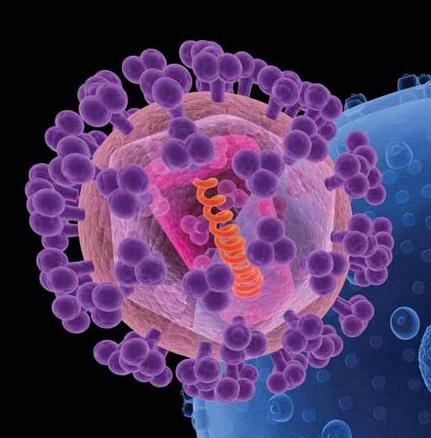By NewsDesk @bactiman63
The Singapore Ministry of Health reports a total of 171 newly diagnosed cases of human immunodeficiency virus (HIV) infections were reported among residents in the first 10 months (January – October) of 2022. The number of notifications is 14% lower than the number of cases in the same period in 2021.
The Ministry of Health (MOH) has analysed 102 cases that were reported in the first six months (January – June) of 2022. Of these cases:
i. 93% were male;
ii. 40% were 20-39 years and 44% were 40-59 years; and
iii. 59% had late-stage HIV infection at diagnosis. This is 1% lower compared to the same period last year.

Image/National Cancer Institute
Sexual intercourse remains the main mode of HIV transmission, accounting for 91% of the 102 cases. Heterosexual transmission accounted for 39% of cases while 52% of the cases occurred in men who have sex with men, including men who engage in bisexual sexual activities (3%).
55% of the newly reported cases were detected by HIV tests performed during the course of medical care and were typically at a late stage of HIV infection. Another 17% were detected during routine programmatic HIV screening while 15% were detected through self-initiated HIV screening. The rest were detected through other forms of screening. A higher proportion of men who have sex with men (23%) had their HIV infection detected via self-initiated HIV screening compared to heterosexuals (8%).
The most effective way to prevent HIV infection is to remain faithful to one’s spouse/ partner and to avoid casual sex, or sex with sex workers. Persons engaging in high-risk sexual behaviour, such as having multiple sexual partners or engaging in casual or commercial sex, are strongly advised to use condoms to reduce their risk of HIV infection and other sexually transmitted infections. Condoms should be used consistently and correctly during every sexual encounter. In addition, the use of preventive measures like HIV pre-exposure prophylaxis are highly effective when used as part of a comprehensive HIV prevention strategy.
Going for HIV testing is the only way to know one’s HIV status. Everyone should know their HIV status and get tested at least once. MOH and the Health Promotion Board (HPB) urge at-risk individuals to go for regular HIV testing every three to six months. Regular HIV testing and early diagnosis allow persons living with HIV to be treated early and achieve better treatment outcomes. A person living with HIV can protect their sexual partner from infection, if they are on regular treatment and have an undetectable viral load. With early and effective treatment, persons living with HIV can continue to lead lives no different from others.
- Chinese shingles vaccine receives clinical trial approval from Philippines FDA
- Vietnam COVID-19: Jan. 1, 2023 sees the lowest number of new cases in nearly 2 years
- Bangladesh reports record dengue deaths in 2022
- Leptospirosis in Puerto Rico: More than 700 total cases since Hurricane Fiona
- Rabies in Mexico: Human cases reported in Oaxaca and Nayarit
- CDC warns of Salmonella infections linked to raw alfalfa sprouts
- Vietnam: Phú Thọ man dies from rabies months after dog bite
- Malaysia advises public how to avoid Naegleria fowleri after South Korea reports 1st case

